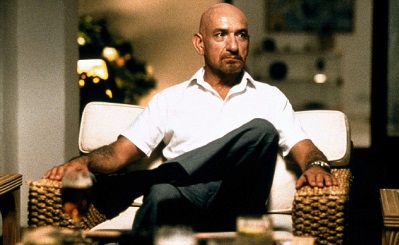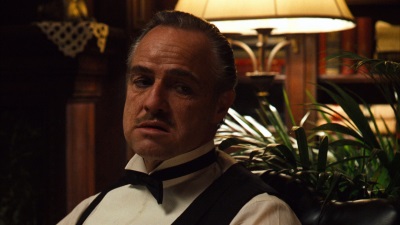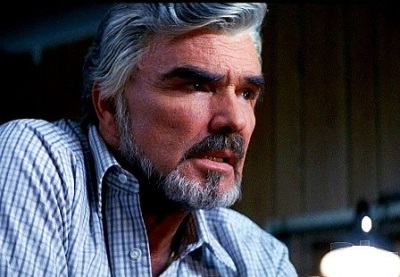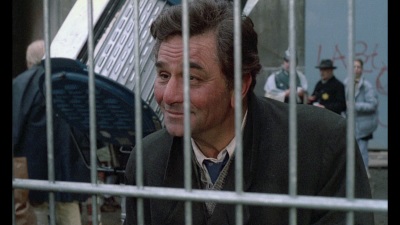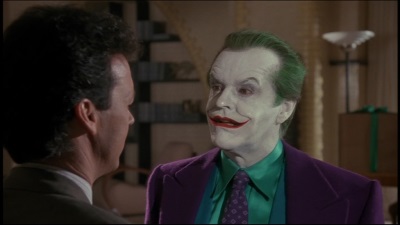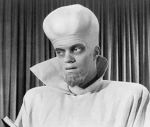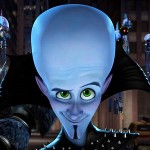My last post was about the beautiful and very talented actress Jennifer Lawrence and her recent digital paparazzi scandal. As I was writing that piece, I was reminded by how good a job Lawrence has done in The Hunger Games movies—she brings a real sense of terror to the part, but also a grim determination, an almost sinister resolve. In some ways, she is the ideal of new American kid: part nerd, part warrior.
Having said that, I was also struck by just how unconventional a choice it was when the producers of the Hunger Games picked Lawrence for the role of Katniss Everdeen. True, Lawrence had already shown her acting chops in a gritty, social-realist film called Winter’s Bone. But even so, I am pleasantly surprised that Lawrence—whose physical beauty is of a soft-edged, earthy, girl-next-door variety—did not get edged out by some conventional, Barbie Doll type. As it turns out, Lawrence is the perfect actress to play Katniss, and in choosing her the producers made their first brave decision that led to the movie’s eventual, enormous success.
In realizing this, I began to think of how many other great movies have elevated their material by making inspired, offbeat casting choices. Here are my top 10 examples:
Melanie Griffith in Working Girl
When Mike Nichol’s fine romantic comedy Working Girl went into production in 1987, Melanie Griffith was still a virtual unknown. She had been acting since her teens, mostly playing sex objects like the poisonous blond in Arthur Penn’s Night Moves and the crazy blond in Something Wild. With her baby doll voice and too-voluptuous curves, Griffith was hard to take seriously. She seemed doomed to spend the rest of the career in a series of vamp roles—or worse. Fortunately, as she had already revealed in her previous pictures (especially Something Wild), she was also a damned good actor. She has a surprising depth and a fine sense of comic timing. And so, when we watch as Tess McGill, the main character of Working Girl, transform herself from big-haired, bombshell secretary into a serious Wall Street player—worthy of male respect—we are also watching Griffith’s transformation from B-movie eye-candy to Oscar-worthy actress.
Arnold Schwarzenegger in The Terminator
The story of how Arnold Schwarzenegger became the titular red-eyed killing machine of The Terminator has become part of Hollywood Legend. The producers had originally wanted Arnold to play Reese, the human soldier who is sent back in time to protect Sarah Connor. The film’s director, however, a very young James Cameron, hated the idea of casting a muscle-man in his film (in any role).
So Cameron came up with a secret plan. He arranged to have lunch with Schwarzenegger. His plan was to be so deliberately obnoxious to the big Austrian that, before the meal was over, Schwarzenegger would get disgusted and storm out of the restaurant (and, presumably, off the picture). Brilliant!
It didn’t exactly work out that way. The lunch did, in fact, happen, but Cameron found himself impressed by the actor. For one thing, Schwarzenegger asked some unexpectedly perceptive questions about the Terminator’s mannerisms. How would a Terminator walk? How would he shoot? Would he blink when he fired a gun? Clearly Schwarzenegger—who had been a physical performer for most of his working life (he had already won the Mr. Olympia body-building competition seven times)—sensed that playing the Terminator would be more akin to dance or Kabuki theater than anything resembling traditional movie acting.
Needless to say, Cameron was blown-away by Schwarzenegger’s ideas—so much so that he offered him the part of the cyborg (despite having already promised it to his long-friend Lance Henriksen). As for Schwarzenegger himself, he made a very courageous move in switching from the Reese role to the Terminator. For years people had been cracking jokes about his weird Teutonic accent and “robotic” performances, and if The Terminator had flopped he would have found himself right back in the dumb, mute, beefcake roles like Conan the Barbarian from which he had only recently escaped.
It didn’t flop. Schwarzenegger’s performance as the cyborg is a graceful, terrifying ballet of Nietzschean ultraviolence. The Terminator became a science fiction masterpiece, and Arnold made the transition from iron-freak to icon.
Ben Kingsley in Sexy Beast
The actor Gregory Peck once said that playing a villain in a movie was like throwing a rattlesnake into a crowd. His point, I believe, was that playing a villain is too easy. The actor doesn’t have to work for the audience’s attention.
I agree with Peck…mostly. Too many actors have received undeserved praise for villainous roles that were merely manic or over-the-top violent. But even so, it’s amazing to see what a really fine actor can do with a black-hat part. Think of Anthony Hopkins as Lector, Robert Deniro as Max Cady, or Rutger Hauer as Roy Batty.
I would add to this list the role of Don Logan, as played by Ben Kingsley in the film Sexy Beast. This post is about unusual choices in casting. And in picking the bald, diminutive, almond-skinned Kingsley to play Logan, the producers of Sexy Beast made a whopper. The idea must have seemed deliciously strange—that of casting Logan, a London mob enforcer, with an actor best known for playing Gandhi. It’s hard to imagine a character as distant from Gandhi as Don Logan—who is described bluntly as a “sick fuck” by one of the other characters. The mere mention of his name is enough to inspire half-crazed terror.
But there is one scene in particular in Sexy Beast when Kingsley is able to elevate the role to some higher plane. It takes a place in a bar, lasts maybe three minutes, and contains no violence. And yet Kingsley uses it to suggest an entire past for this otherwise two-dimensional character. It’s a great performance.
Marlon Brando in The Godfather
Forty years later, it’s hard to believe that when director Francis Ford Coppola began considering Marlon Brando for the title role in his gangster movie, The Godfather, most people thought he was crazy. Brando was a legend, of course; he had redefined acting in the 1950s with groundbreaking performances in A Streetcar Named Desire and On the Waterfront (for which he won an Oscar). But in 1972, he was completely washed-out as an actor. He had made exactly one decent movie in fifteen years (1968’s The Night of the Following Day), and even that one had flopped.
His stock was so low, in fact, that Coppola’s studio, Paramount, insisted that Brando do an audition for the part. Brando, in an uncharacteristic show of humility, agreed to the audition. He got the gig, and the rest is history.
Or is it? Everybody loves the performance, but mostly people don’t step back and appreciate what Brando really brought to the role—a commanding physical presence, as well as a chilling interpretation of Don Vito’s voice. “You had your courts of law,” he whispers to the cowering Bonasera (and I still remember John Belushi’s hilarious riff on it from Saturday Night Live). More importantly, Brando gave Don Vito’s character (which is somewhat two-dimensional in Mario Puzo’s novel) a depth and irony that few other actors would have attempted, no less pulled off. It is, quite simply, one of the greatest cinematic performances ever given.
Dennis Hopper in Blue Velvet
One adjective that is often used to describe David Lynch’s casting choices is “quirky,” a word that completely dismisses the great director’s inspired use of fine actors in very challenging roles. Never were his choices more brilliant than in Blue Velvet, his masterpiece. He cast his own girlfriend, Isabella Rossellini, as the sexually abused “blue lady,” not to mention a still unknown Kyle MacLachlan for the lead.
But the really amazing casting choice—and the one which made the most impact at the time—was that of Dennis Hopper in the role of Frank Booth, the crazed gangster who torments MacLachlan. Hopper was a star of the 1960s, having acted in and directed the hippie classic Easy Rider. He had never played a heavy before, and most of his recent roles had reeked of a strong stoner ethos (see his drug-addled war correspondent in Apocalypse Now).
So everyone was shocked to see Hopper play the sleek, sadistic Booth with such absolute authenticity, not to mention humor. Booth is one of the most repulsive characters in the history of cinema, yet Hopper makes him glitter like some evil snake.
In addition to his explosive performance, Hopper brought some inspired touches to the role. (It was his idea to have Booth carry a nitrous oxide tank in his jacket, taking frequent, deep hits off of it prior to committing yet another act of violence.) In fact, Hopper claimed wanted the role because he felt a deep resonance between Booth’s madness and his (Hopper’s) own dark impulses. “I have to play Frank Booth,” he told Lynch, “because I am Frank Booth.”
But this is not a case of actor simply exhibiting his mental demons on screen. Hopper’s performance is as controlled as it is horrific.
Robert Downey Jr. in Iron Man
It’s a strange thing to say, but I honestly believe that no other actor in the world could have played Tony Stark as well as Robert Downey Jr. did in the first Iron Man film. Sure, there are some other Hollywood A-listers who might have been watchable in the part. But none of them would have brought the unique combination of intelligence, wit, and manic energy that makes Downey’s performance so compelling. When Downey plays Stark at his workbench tinkering on his latest high-tech incarnation, he is like a dancer. Or a symphony conductor. Or a magician. Or perhaps some mixture of all three. He bops and swoops and twirls. And as for his vocal delivery, how many other actors could have played such an unrepentant smart-ass and gotten away with it? Stark’s come-backs are as cutting as his laser torch, and one gets the feeling that Downey’s are, too.
In fact, Tony Stark seems like the character that Downey was born to play. I am speaking, obviously, of the almost fateful parallels that exist between Stark’s emotional journey and Downey’s own. Stark is a talented-but-spoiled rich kid who goes from hedonistic playboy to self-sacrificing hero. Similarly, Robert Downey was the brilliant acting prodigy of the 1980s who came perilously close to destroying his career, only to redeem himself later. The only constant in Downey’s professional life has been his unfailing talent, which—like Stark’s—has always given him the second chance he needs.
It was in giving Downey this second chance that producers of Iron Man made such a brave (and ultimately lucrative) choice. Prior to Iron Man, Downey had made some fine pictures, but he had never played an action hero. The producers took a chance on him, and it paid off, with Iron Man becoming one of the major characters of modern pop culture.
Burt Reynolds in Boogie Nights
Like every other kid who grew up in the 1970s, I love Burt Reynolds. He was the Bandit, after all, in Hal Needham’s good ole boy action movie, Smokey and the Bandit. It was the success of that stunt-driven comedy that led Reynolds to make a slew of similar (but rather crappy) films like Hooper and The Cannonball Run. At some point in the 1980s, Reynolds became a parody of himself. People began to forget that he had once been a hell of a good actor (see his fine performance as the icily tough Lewis in Deliverance).
Fortunately, P. T. Anderson had the idea of leveraging Reynolds slightly tarnished image as 1970s icon by casting him as the soft-spoken, worldly-wise porn director in Boogie Nights. It was a clever choice, obviously, and Reynolds took full advantage of it. He gives a charming, tragic performance as a decent man past his prime.
Peter Falk in Wings of Desire
Anybody who reads this blog knows that I am a huge fan of Wim Wender’s 1987 film Wings of Desire. It’s a German film and it boasts a cast of great German and French actors, most notably Bruno Ganz (who eventually found fame playing a completely unhinged Adolf Hitler in Downfall). But at the heart of the film one find an unlikely American, the TV legend Peter Falk, who plays the loveable, offbeat character of…Peter Falk.
It’s one of the strangest examples of meta-casting that I have ever seen in a movie. (No, I have not seen Being John Malkovich, but I imagine it is a similar example.) In the film’s depiction, Falk is an aging actor who remains popular in Berlin thanks to reruns of Columbo that play endlessly on the local TV stations. He is in town shooting a holocaust movie, and he spends his downtime doing sketches with a charcoal pencil. In and of itself, it’s a great little cameo performance. But it really becomes a classic when Falk’s character is revealed to have a pivotal (and completely unexpected) importance to the film’s plot.
Terence Stamp in The Limey
I have always been a huge fan of Terence Stamp, ever since I was kid and I saw him play General Zod in Superman II. What a great voice that guy has! Though known mostly as a character actor, he has had a few kick-ass leads, most notably Steven Soderbergh’s great little noir flick The Limey. In fact, this is my only example of a Triumph of Stunt Pre-Casting, since screenwriter Lem Dobbs apparently wrote the story with Stamp in mind.
Good choice. Stamp is perfect in the role of Wilson, an aging London criminal who flies to L.A. in search of his daughter’s killer. The movie made a splash when it came out, mainly because of Stamp’s amazing, diamond-edged performance but also because of an artistic kerfuffle. This latter was due to Soderbergh’s controversial use of footage from another of Stamp’s movie (Ken Loach’s 1967 drama Poor Cow) to serve as flashback imagery of the young Wilson. Soderbergh got Loach’s permission to use the footage, but it still rubbed some film purists the wrong way. As it turns out, the footage adds almost nothing to a film that is otherwise flawless. We don’t need to see images of the young Stamp to get a sense of Wilson’s history, his emotional baggage—he oozes presence in every frame. My favorite moment is when Wilson’s love interest in the movie, Elaine, offers the give him the phone number of the man whom he suspects killed his daughter. “I’ve got his number,” Wilson says, grinning. (We know, as Elaine doesn’t, that Wilson has already killed five people to get that very same phone number.) Great flick.
Michael Keaton and Jack Nicholson in Batman
I have completely lost track of how many remakes, reboots, and sequels have been made in the Batman universe since Tim Burton’s 1989 version. The original film was a blockbuster mainly because everyone thought it would be a great comic-book action flick (as opposed to the dark, surrealist fantasy that Burton actually made). Regardless, it’s a great movie. The visuals are stunning and inventive (Gotham looks like a hellish version of Romper Room). But the real magic of the picture comes from the unlikely casting of Michael Keaton as Batman and, even more so, of Jack Nicholson as The Joker.
Both choices were, in their own way, totally bizarre. In 1989, film audiences knew Keaton solely as a comic actor, best known for his lovable goofball roles in Night Shift and Mr. Mom. Fortunately, Burton must have sensed some darker shadings to Keaton’s personality, which revealed themselves wonderfully in the film. Keaton plays the Bruce Wayne / Batman dichotomy sort of like Dr. Jekyll and Mr. Hyde, with Wayne’s clueless affability morphing instantly into Batman’s murderous rage.
As for Nicholson, he was already a superstar, having won two Oscars and appeared in an unbroken chain of A-list projects since the early 1970s. But he had never played a role as over-the-top and surreal as the Joker (the closest he had come was his daffy turn as Satan in The Witches of Eastwick). The role of the Joker required a strange blend of psychological realism combined with turns of pure fantasy. Somehow Nicholson—who was 52 at the time—pulled it off, as always.


